
Tell us what you need to find a matching loft conversion specialist

Get free quotes from professionals near you

Compare offers and choose the one that best matches your need
- Householdquotes.co.uk
- Conservatory
- Brick Conservatory
Brick Conservatory: Your All in One Guide

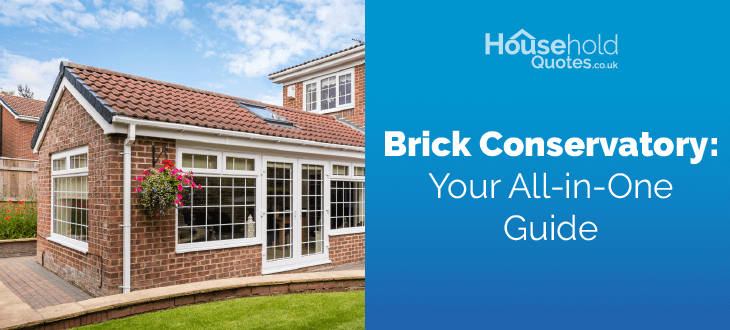
- In the UK, homeowners highly value a conservatory with brick side walls for its long-lasting strength and timeless charm, making it an elegant and enduring addition to any home.
- Brick conservatory prices range from £6,500 to £16,000 for a 3.5m2 fitted lean to structure on dwarf-walls.
- You don’t need planning permission for a brick wall conservatory but must follow building regulations.
There’s beauty in brick, and if you opt for a professionally installed dwarf wall conservatory, you can enjoy a long-lasting, private, and comfortable space flooded with natural lights for many years.
The UK Brick Development Association reports that a staggering 75% of houses in the UK use brick as the primary construction material, which most likely includes your own home.
Therefore, adding a brick-built conservatory, or half brick conservatory, would seamlessly blend with the rest of your house and significantly increase its appeal and value.
Anglian Home suggests that a well-constructed conservatory that matches your home’s style could increase your property’s value by up to 7%.
Although brick walls excel in insulation and strength, they are more costly to install than other conservatories.
When considering brick conservatory designs for your home, consider your personal preferences, budget constraints, available space, and the intended purpose of the conservatory area.
When it comes to brick conservatories, the possibilities are truly endless. Whether you're drawn to the classic elegance of a Victorian style, the modern simplicity of a Lean-to, the refined look of an Edwardian, or the distinctive layout of a bespoke design, there's an option to suit every taste and enhance your living space.
This article covers everything you need about full-to-half-brick conservatories, from types of cost and complementing materials.
Speaking with professional conservatory tradespeople is best if you already have some general knowledge and feel overwhelmed by the choices. They can provide customised guidance and ensure your new addition meets all standards and fits perfectly with your home.
Fill in the form below to instantly connect with one. It takes less than a minute.
- Describe your needs
- Get free quotes
- Choose the best offer
It only takes 30 seconds

- What is a brick conservatory?
- What are the different types of brick conservatories?
- What are the advantages of a brick conservatory?
- What are the disadvantages of a brick conservatory?
- What are the window options for a brick built conservatory?
- How much does a brick built conservatory cost?
- Get multiple quotes for brick conservatories
- FAQ
What is a brick conservatory?

If you want to add usable space, a home office, a gym, or a lounge with some privacy to your home, a brick conservatory, also known as a dwarf-wall conservatory, is a great choice. According to ConservatoryLand, these conservatories are built using a mix of bricks and glass or wood elements to match your house's style.
Typically attached to the side or back of your home, they let in plenty of natural light through glass roofs, skylights or large windows. They help maintain a comfortable temperature, making them perfect for relaxation.
One key advantage of brick-wall conservatories is their durability. Built to last for years with minimal maintenance, they offer a long-term solution for enhancing your home and lifestyle. This durability should give you confidence in your investment, knowing that your conservatory will stand the test of time.
Additionally, Conservatory Village suggests adding a cill to these conservatories, which provides a space to display ornaments in the windows. This personalises the conservatory and makes it unique.
According to the UK Planning Portal website, brick conservatories are an exception to building regulations and planning permission as long as they are built at ground level and have a floor area of less than 30 square metres.
Remember that local regulations, such as covenants, protection orders, listed building status, or other restrictions, could apply to your area and the surrounding properties. To ensure compliance, it is advisable to confirm with your local planning office if any authorisations are required.
Whether you want a cosy and private room for activities like playing, working, or exercising, or you simply want to enjoy your garden year-round, a brick conservatory is a fantastic addition to your home. It adds value to your property and offers a functional and beautiful space.
Can a conservatory have brick walls?
Yes, a conservatory can have brick walls providing privacy, insulation, and blending elements with the current brickwork of your property.
Constructing a brick conservatory offers multiple choices. You can opt for a dwarf wall with added glass elements, a side brick wall with dwarf walls, or a full-height brick three-wall option.
According to construction expert Metrolite, a full-height brick wall can reduce the light in the room, although it provides privacy and makes your conservatory look like a natural home extension. However, Anglian Homes says this is a good thing and could raise the value of your property by 7% for matching design.
A brick conservatory offers many benefits. It provides better insulation and temperature control and also adds an attractive appeal to the overall design.
However, it’s important to collaborate with skilled tradespeople to ensure that the structure aligns with specific needs and budgets and that any necessary planning permission is obtained.
Insulation and ventilation in the brick walls are crucial in maintaining a comfortable indoor temperature and preventing moisture buildup. The foundation must be sturdy enough to support the weight of the brick walls.
Despite these requirements, a brick conservatory can be a remarkable and practical addition to any home. It serves as a space for relaxation, entertainment, and the enjoyment of the outdoors.
What are the different types of brick conservatories?
Choosing the right type of brick conservatory involves several key considerations, including your home's architectural style, budget, and personal tastes. Brick conservatories come in various styles, each offering unique features and benefits to enhance your living space.
Whether you prefer the classic elegance of a Victorian-style conservatory with its pitched roof, the modern simplicity of a lean-to conservatory with a flat roof, the refined look of an Edwardian-style conservatory with a glass roof, or the distinctive layout of a P-shaped conservatory, there is an option to suit every preference.
In the following sections, we will explore each in more detail and how they can complement your home.
Roof types
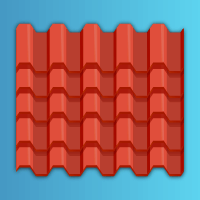
Tiled roof conservatory (solid roof)
A brick conservatory with a tiled roof offers an enclosed room-like extension of your home. This type offers excellent insulation and integrates seamlessly with your existing roof.

Glass roof conservatory
This style enhances natural light and creates a bright and airy atmosphere both day and night.
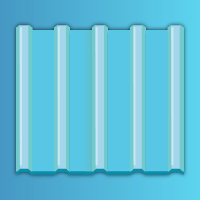
Polycarbonate roof conservatory
This practical, low-cost alternative to glass provides long-lasting qualities and is easy to maintain. It is suitable for those who want better thermal efficiency on a budget.
Next, we will explore the architectural styles of brick conservatories to guide your decision further.
Brick conservatory styles
Victorian Style Conservatory
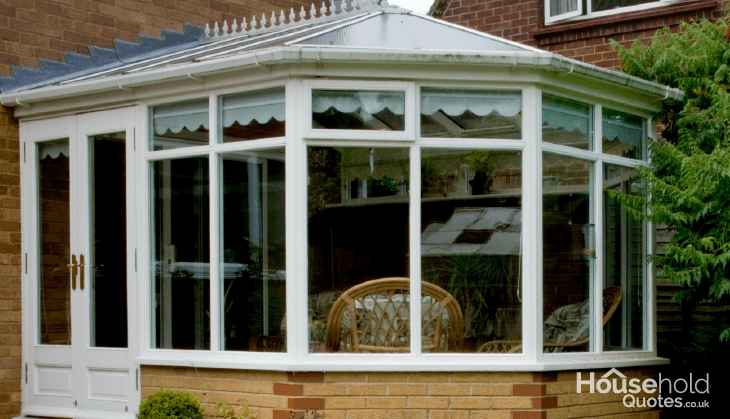
This style earns its reputation for its elegant, classic design, which includes a faceted frog that creates a curved appearance and a steeply pitched roof. Victorian conservatories often feature ornate detailing, such as finials or crestings, and builders typically construct them with a dwarf brick wall as a base.
The front's multiple facets add to its appeal and provide a panoramic view of the garden or surrounding landscape.
Victorian conservatories are perfect for traditional homes and can also bring a touch of historical charm to modern properties.
Edwardian Conservatory
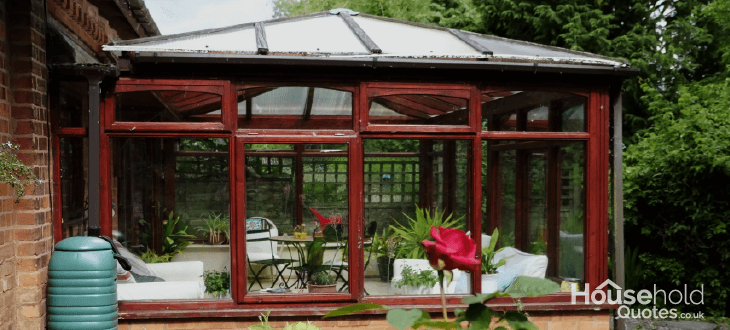
This style is characterised by its simple, clean lines and rectangular or square footprint, making them highly functional and spacious. Similar to Victorian conservatories, they rest on a low brick wall and have a pitched roof with a less intricate design, prioritising internal space. Their practical design makes them suitable for various uses, such as dining areas or living spaces, and their timeless style complements both period and contemporary homes.
Orangery Conservatory

The Brick orangery is typically larger and more durable than regular conservatories. It combines traditional brickwork with expansive glass windows, resulting in a stunning lantern roof that fills the interior with sunlight.
Orangeries traditionally served as luxurious greenhouses for growing exotic plants during harsher climates, but are now popular as sophisticated extensions to living spaces. The extensive use of brickwork provides greater privacy and insulation, making orangeries a more permanent and integrated addition to a home.
Each style has its unique charm and functionality, allowing it to accommodate different design preferences and practical needs. With full brick walls, conservatories can resemble a brick extension of your home.
Whether you seek the ornate impact of the Victorian era, the understated elegance of Edwardian symmetry, or the stately grandeur of an orangery, there’s a conservatory style that can enhance the beauty and utility of your home.
Now, let’s look at the advantages and disadvantages of a brick conservatory.
What are the advantages of a brick conservatory?
Adding a brick conservatory offers several benefits compared to glass alternatives. According to experts at Anglian Home Improvements, brick conservatories also provide superior soundproofing and privacy, allowing you to enjoy your space without external disturbance.
Brick constructions are robust and durable, withstand harsh weather with minimal maintenance, and offer various design options. This lets you customise your conservatory to match your home, making it a smart long-term investment.
Let’s explore why brick conservatories are a great option for you.
- Visual appeal: You have various style options, such as lean-to, Victorian, and Edwardian, which can complement your home’s design.
- Strong: There’s strength in brick, and a brick conservatory, if well taken care of, will last for years.
- Insulation and comfort: Bricks insulate well, keeping the conservatory’s temperature regulated throughout the year and reducing energy usage and cost.
- Privacy and acoustics: Solid walls of brick conservatory offer more privacy and better soundproofing, creating a quieter indoor environment.
- Low maintenance: A brick conservatory requires less maintenance than other materials due to the sturdy brick material.
- Increase property value: A well-executed brick conservatory can boost your property value by up to 7% if it seamlessly integrates with your home, according to Everest.
What are the disadvantages of a brick conservatory?
According to the UK Planning Portal, it is important to consider a few drawbacks while using solid walls in construction despite their certain benefits.
Let’s explore them in more detail.
- Cost: Brick conservatory prices are more expensive than glass ones because of higher material and labour costs. They may also require planning permission if you live in a conservation area or your building is listed, which can increase costs.
- Construction and flexibility: Constructing a brick conservatory takes longer than simpler, prefabricated types. These structures are also less flexible for future modifications or extensions than modular options, as highlighted in Leka Systems’ article “The advantages of a modular conservatory.”
- Limits natural light: The presence of brick walls limits the amount of natural light and can obstruct views.
Regardless of the advantages and disadvantages, installing a dwarf wall conservatory depends on you.
What are the window options for a brick built conservatory?

When designing your brick-built conservatory, selecting the right window options is a crucial step that can greatly affect the structure's final appearance. The windows' type, size, and placement can influence the natural light entering the conservatory and its overall aesthetic appeal.
Choosing the right windows can also help with ventilation and energy efficiency, making your conservatory a comfortable living space all year round. Therefore, it's important to carefully consider your window options before making a final decision.
Self-cleaning glass: This innovative glass contains a coating that reacts with sunlight to break down dirt, which is then washed away by rain. It’s the perfect solution if low maintenance is a priority for you.
Low-E glass: Low-emissivity glass is a type of glass specially designed to reflect heat into the room, which in turn helps improve energy efficiency. This smart investment can save money on heating bills and enhance your comfort in the long run.
Double-glazed glass: Double-glazed glass is a popular choice for conservatory windows. It has two glass panes with a small gap filled with air or gas, providing insulation to keep your conservatory warm in winter and cool in summer. It’s energy-efficient, saves money on heating and cooling bills, and reduces noise more effectively.
Tinted glass: Tinted glass for conservatory windows is coated with a thin layer of tinted film that reduces the amount of sunlight entering your home, keeping the conservatory cool and enhancing privacy. It may also reduce natural light, but it is perfect if you want to enjoy your conservatory in privacy.
Acoustic glass: Consider using acoustic glass for conservatory windows in noisy areas. It consists of multiple panes with a special interlayer that helps reduce outside noise, making your conservatory more peaceful.
Regardless of your choice, it’s important to consult a professional to ensure your windows are installed correctly and securely.
How much does a brick built conservatory cost?
Brick conservatory prices could range from £6,500 to £16,000 for a 3.5m2 fitted dwarf-wall conservatory, according to Homeimprovementquotetoday in the UK. The conservatory prices can increase based on size, locality, choice of material, and the tradespeople you work with.
Insulating the dwarf walls is another factor that can increase the price of your conservatory. Despite the initial higher cost, insulating the walls instead of using full floor-to-ceiling glazing will save money on heating bills.
Let’s explore brick dwarf wall conservatory prices per style of 3.5m x 3.5m sizes.
| Type | Roof | Price ranges (£) |
|---|---|---|
| Lean to | Polycarbonate | £6,500 - £10,000 |
| Victorian | Polycarbonate | £10,000 - £15,000 |
| Edwardian | Polycarbonate | £10,000 - £15,000 |
| Gable-end | Polycarbonate | £11,000 - £15,000 |
For Glass roof brick built conservatory prices are as follows for 3.5m x 3.5m sizes.
| Type | Roof Type | Price ranges (£) |
|---|---|---|
| Lean to | Glass | £7,000 - £10,500 |
| Victorian | Glass | £12,000 - £15,000 |
| Edwardian | Glass | £9,500 - £16,000 |
| Gable-end | Glass | £11,000 - £16,000 |
For fully fitted tiled roof conservatories on dwarf walls, you can expect to pay between £15,745 and £20,355 for a lean-to conservatory. These prices depend on factors such as the frame type for a 3m x 4m conservatory.
Get multiple quotes for brick conservatories
Installing a brick conservatory is a significant investment and a long-term design decision. To ensure a desirable outcome, careful consideration of the style and design of the brick conservatory, as well as the quality of the artistry, is essential.
Working with professionals who can deliver high-quality work is crucial to avoid wasting time and money.
Comparing different quotes to take the first step toward getting the best price for your project. And we can help.
Filling in the form lets you instantly connect with a professional who can provide free quotes.
- Describe your needs
- Get free quotes
- Choose the best offer
It only takes 30 seconds

FAQ
Yes, a conservatory can be partially or full of brick. Most conservatories are constructed on dwarf walls with a base. These are the simplest options for brick conservatories.
Yes, a conservatory can be made of full brick, which looks more like an extension but offers the indoor-outdoor integration of a conservatory.
The cost and construction will be more expensive than that o dwarf walls.
You normally don’t need planning permission for a brick conservatory. Once you keep the conservatory within a certain size and your property is not in a conservation area, UNESCO or other listing organisations list it.
A brick built conservatory costs £6,500 to £16,000 for a 3.5m x 3.5m fitted conservatory on dwarf walls. The price can increase based on size, type, location and tradespeople’s pricing guides.
No, brick is not cheaper than glass. It’s more expensive, especially due to labour costs and construction time. Also, the foundation must be sturdier to manage the bricks’ weight than glass walls.

Rousanna is an SEO content writer at Household Quotes with a background in digital marketing and copywriting. She creates informative, well-researched home improvement content based on practical ideas to help readers make informed decisions.
- Brick Conservatory: Your All in One Guide
- What is a brick conservatory?
- What are the different types of brick conservatories?
- What are the advantages of a brick conservatory?
- What are the disadvantages of a brick conservatory?
- What are the window options for a brick built conservatory?
- How much does a brick built conservatory cost?
- Get multiple quotes for brick conservatories
- FAQ
